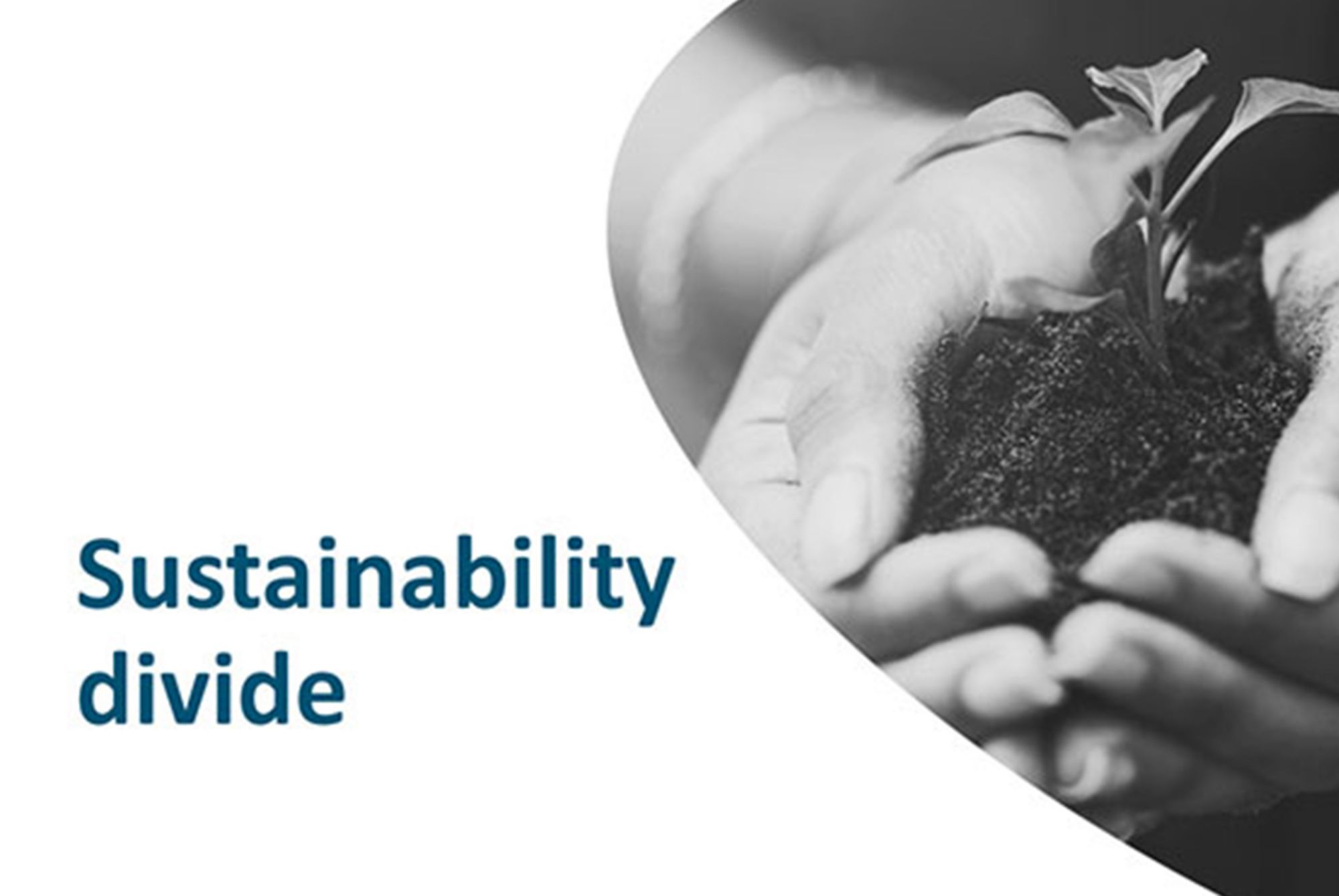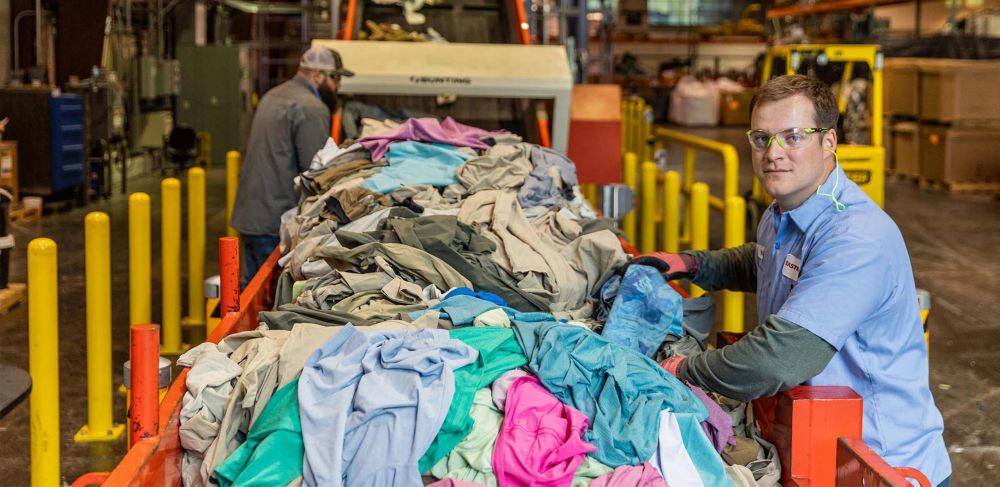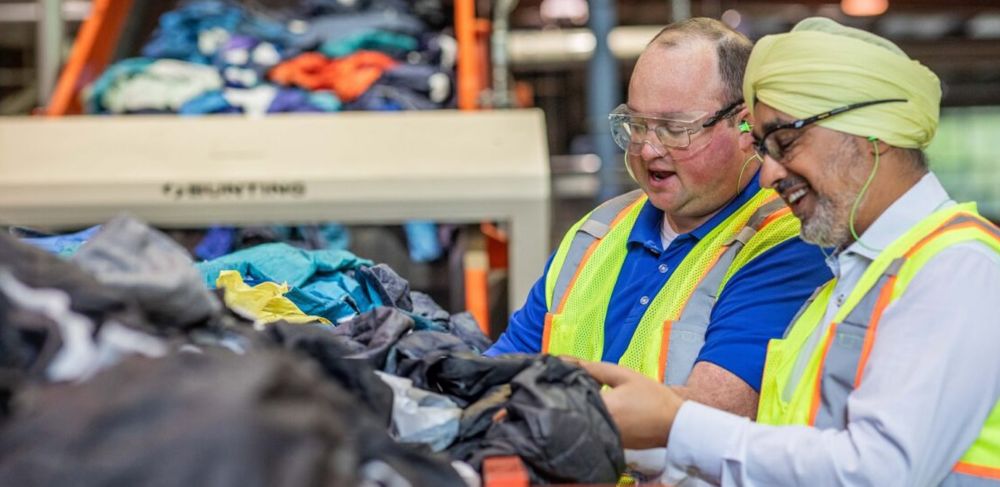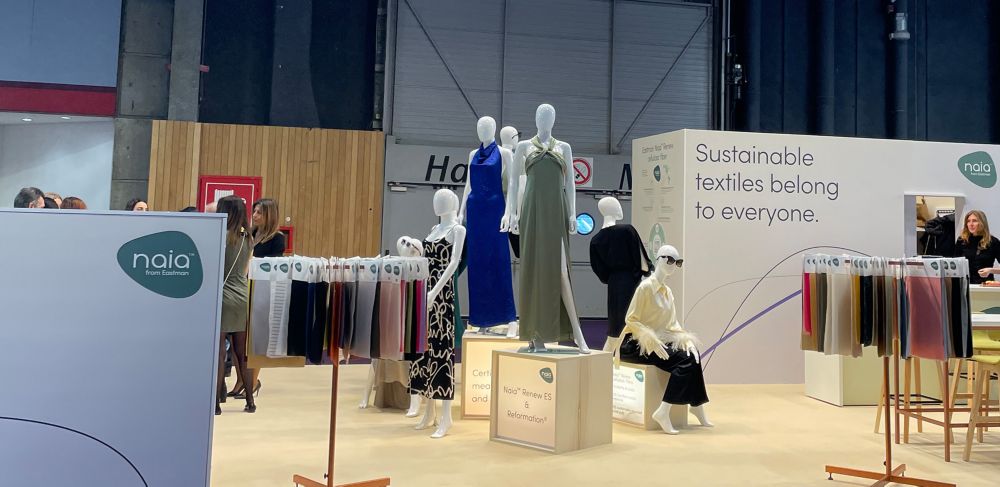As global apparel consumption continues to rise—an expected increase of 60% by 2030—that growth could have a dangerous impact on the environment. Currently, 87% of textiles are landfilled or incinerated and 10% of GHG emissions come from fashion industry. As Earth’s resources become more and more constrained, the global fashion industry is stepping up to reduce its carbon footprint. But bringing consumers along on the sustainability journey can be a challenge.
To help better understand consumers’ purchasing habits and brands’ sustainability strategies, Eastman has conducted research through the U.S. Sustainable Leader Consumer Community and the Eastman Global Marketing Message Study.

Sustainability divide: Out of the top 100 most sustainable global brands, the apparel industry accounts for just 4%—with only Kering, H&M, adidas, and Inditex making the list. Brands are beginning to make greater strides toward sustainability across the value chain. The global fashion industry’s Pulse Score, which measures social and environmental performance, has risen across markets with a 48% score increase for mid-price apparel and a 44% score increase for entry-price apparel from 2018 to 2019.
Consumers across China, Europe, and the U.S., and millennials in particular, say they love to try new clothing styles and want new styles every few weeks. Fit, comfort, quality, and style are primary factors important to global consumers’ apparel purchases, while fiber content, sustainably, and origin fall lower on the list.

Materials matter: Materials top the list of biggest sustainability issues for both brands and consumers. Sustainably mined U.S. consumers are concerned with issues such as microfibers in the ocean, deforestation, the lack of sustainable fibers in garments, resources used to grow cotton, and the increased use of polyester. Across the globe, the majority of consumers are willing to try new or different fibers.
Global brands are also highly focused on issues of resource efficiency and transparency. Of the top 20 global fashion brands, many have made commitments to using eco-friendly fabric materials through partnerships with environmental nonprofits such as Better Cotton Initiative, Canopy Planet, Make Fashion Circular, and Recycled Polyester Commitment.

True transparency: For sustainably minded U.S. consumers, transparency is a big part of building trust. These consumers consider brands that list ingredients and have a history of “doing the right thing” as more trustworthy. Global consumers look for clothing inspiration most often from their current wardrobe, retail stores, word of mouth, and social media.
The apparel industry has an incredible opportunity to pioneer a sustainable fashion revolution. Using environment-friendly clothing materials can help brands address the divide between their sustainability commitments and consumer needs. Eastman Naia™ cellulosic fiber offers a sustainable material without compromise, helping brands bridge that gap. With full transparency from tree to fiber, Naia™ is responsibly sourced from sustainably managed pine and eucalyptus forests and plantations. It is produced in a safe, closed-loop process where solvents are recycled back into the system for reuse. Naia™ is OEKO-TEX® Standard 100 Product Class I certified and made with no hazardous chemicals listed on the ZDHC Manufacturing Restricted Substances List.
Naia™ has an optimized, low-impact manufacturing process with a low tree-to-fiber carbon and water footprint. It has a third-party reviewed life cycle assessment compliant with ISO 14044 and is favorably ranked on the Higg Materials Sustainability Index. Naia™ received the TÜV AUSTRIA ‘OK biodegradable’ certification for freshwater and soil environments and the ‘OK compost’ certification for industrial and home settings.
Opportunities exist for brands to collaborate with suppliers to build transparency throughout the supply chain and better educate consumers. Many Naia™ brand partners are making fiber commitments to support circular solutions and use eco-conscious materials, including H&M, LLP, and Marks and Spencer. In the next five years, these types of sustainability initiatives could become commonplace across the industry. By 2025, there is a 54% likelihood that biobased fibers will replace 20% of current textiles and a 68% likelihood we will see a 30% or greater an increase in garments’ recycled fiber content. There is a 52% likelihood that greater than 50% of brands will achieve radial transparency, a 61% likelihood that brands will regularly co-invest with suppliers, and a 69% likelihood that information on fiber-to-store will be seen at the majority of POSs.
Learn more about how Naia™ can be the starting point in the sustainable journey of any fabric or garment at naia.eastman.com/sustainability.





